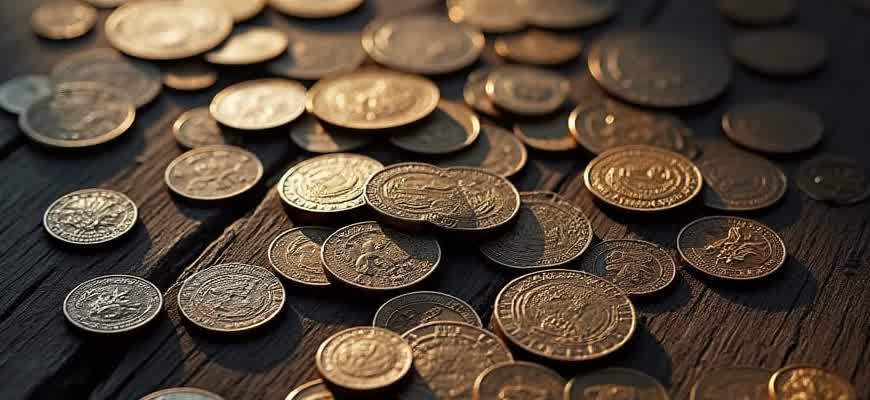Eth Meme Coin Market Cap

The cryptocurrency space has seen the rise of meme tokens, many of which are linked to Ethereum's blockchain. These tokens, often created as a joke or parody, can sometimes experience explosive growth in market value. The market capitalization of ETH-based meme tokens can fluctuate drastically due to investor sentiment and social media trends. The impact of such coins on the overall crypto market is a topic of growing interest among traders and analysts alike.
When assessing the market cap of these tokens, it is essential to consider several key factors:
- Token Supply: The total number of coins in circulation directly affects the market cap.
- Liquidity: The ease with which a token can be bought or sold impacts its price stability.
- Community Engagement: High levels of social media activity or meme-related trends can drive short-term demand.
Important Market Data:
The value of ETH meme tokens can be extremely volatile, with prices swinging rapidly in response to viral internet trends or major endorsements.
Below is a table illustrating the market capitalization and trading volume for some popular Ethereum-based meme tokens:
| Token Name | Market Capitalization | 24-Hour Trading Volume |
|---|---|---|
| Shiba Inu | $5.2 Billion | $400 Million |
| Floki Inu | $1.6 Billion | $150 Million |
| Kishu Inu | $300 Million | $25 Million |
Understanding the Role of Market Capitalization in Cryptocurrency Valuation
Market capitalization (market cap) is a key metric used to evaluate the overall value of a cryptocurrency. It is calculated by multiplying the current price of a cryptocurrency by its total circulating supply. This figure plays a significant role in assessing the relative size and potential of different digital assets within the market. However, it is important to remember that market cap does not directly reflect the quality or usability of a cryptocurrency; instead, it is a measure of its current market acceptance and investor interest.
While market cap is a useful indicator for comparing cryptocurrencies, it is essential to consider other factors, such as liquidity, adoption, and technological advancements, when evaluating a project. A higher market cap can signal that a cryptocurrency is more widely recognized or has greater investor confidence, but it may also indicate that the asset is subject to more volatility and risk. Therefore, understanding the nuances of market capitalization is crucial for making informed decisions in the crypto space.
Key Components of Market Capitalization
- Price – The current trading price of the cryptocurrency in the market.
- Circulating Supply – The number of coins or tokens currently in circulation and available for trading.
- Market Cap – The product of price and circulating supply, representing the total value of the asset.
Market Capitalization in Action
- To calculate the market cap of a cryptocurrency, you multiply the price by the circulating supply.
- A higher market cap often correlates with greater liquidity, stability, and recognition.
- However, market cap alone cannot guarantee a cryptocurrency's success or potential for future growth.
"Market cap is only one piece of the puzzle when evaluating a cryptocurrency. It should be considered alongside other metrics like technology, team, and adoption rates."
Comparing Market Caps
| Cryptocurrency | Price | Circulating Supply | Market Cap |
|---|---|---|---|
| Bitcoin (BTC) | $40,000 | 18,000,000 | $720,000,000,000 |
| Ethereum (ETH) | $3,000 | 120,000,000 | $360,000,000,000 |
| ETH Meme Coin (ETHMC) | $0.10 | 10,000,000,000 | $1,000,000,000 |
Strategies for Investing in Ethereum Meme Coins Based on Market Capitalization Trends
As the market for Ethereum-based meme coins continues to expand, investors must adapt their strategies to account for the volatility and unique market dynamics inherent to these tokens. Understanding the market capitalization trends of meme coins is essential for identifying profitable opportunities and managing risk effectively. By analyzing market cap fluctuations, investors can gain insights into the potential growth or decline of these assets and make more informed decisions.
Market capitalization is a critical indicator when evaluating meme coins. Larger market cap coins are often seen as less risky, with more liquidity and established communities. In contrast, smaller market cap tokens might offer higher potential rewards but come with greater risk due to lower liquidity and higher price volatility. Investors should consider both short-term momentum and long-term sustainability when selecting meme coins to invest in.
Key Strategies for Evaluating Meme Coins Based on Market Cap Trends
- Trend Monitoring: Regularly track the market cap of various meme coins to identify patterns and trends. A sudden increase in market cap can indicate growing investor interest, while a consistent decline might suggest fading relevance.
- Diversification: Spread investments across meme coins with different market caps to mitigate risk. A mix of both large and small market cap tokens can balance potential gains with safer investments.
- Community Engagement: Evaluate the strength and activity of the community surrounding the meme coin. A strong, active community can help sustain the project’s growth and potentially drive future increases in market cap.
- Timing the Market: Invest during periods of low market cap when coins are undervalued but show signs of growth potential, or during market corrections to capitalize on price dips.
Understanding the relationship between market cap trends and coin performance is crucial in managing risk and maximizing returns. Below is a table summarizing different approaches for varying market cap categories:
| Market Cap Range | Investment Approach | Risk Level |
|---|---|---|
| Large (> $1 Billion) | Steady growth, long-term hold | Low |
| Mid ($100 Million - $1 Billion) | Monitor for momentum, potential for volatility | Moderate |
| Small (< $100 Million) | High-risk, high-reward, consider early-stage investments | High |
Important Tip: Always stay informed about the latest market developments, as meme coin trends can shift rapidly. Constant monitoring is key to successful investing in this space.